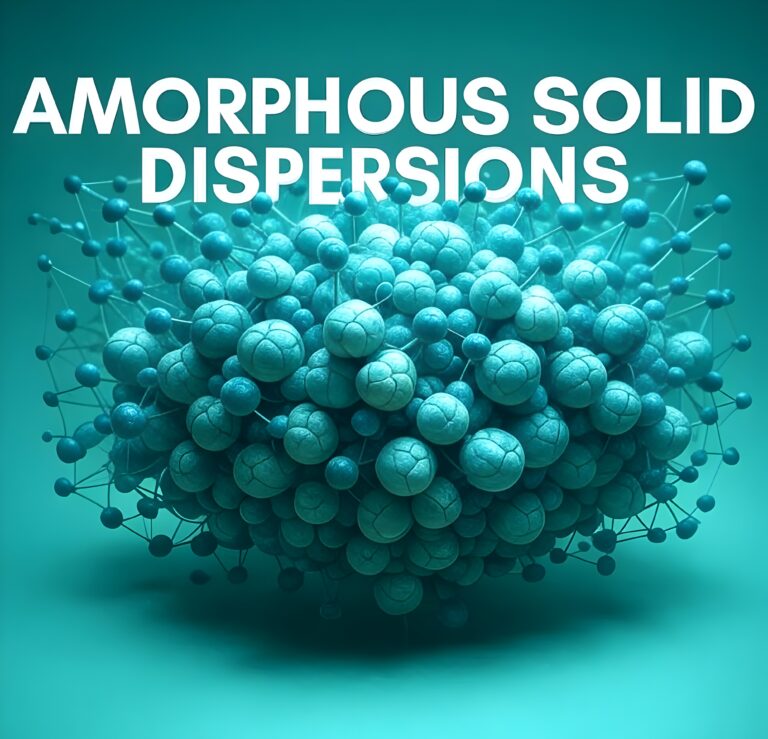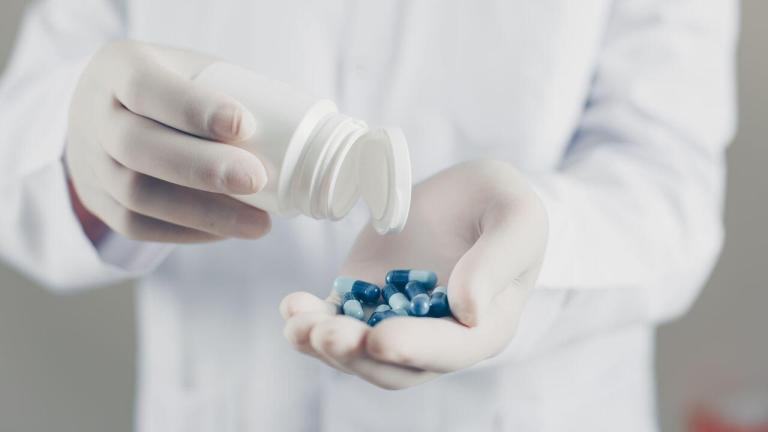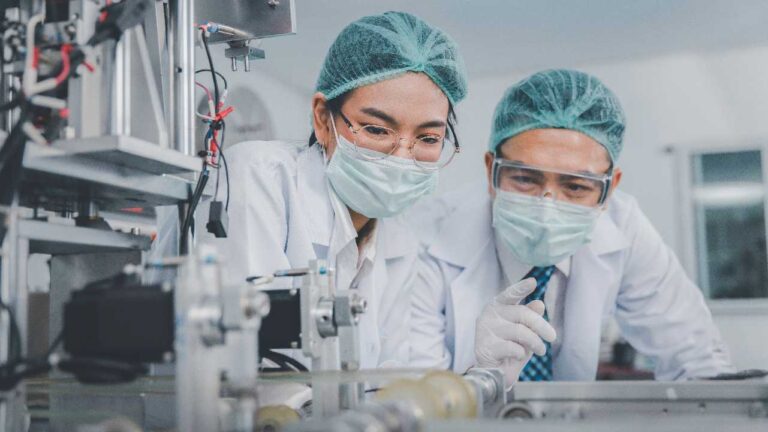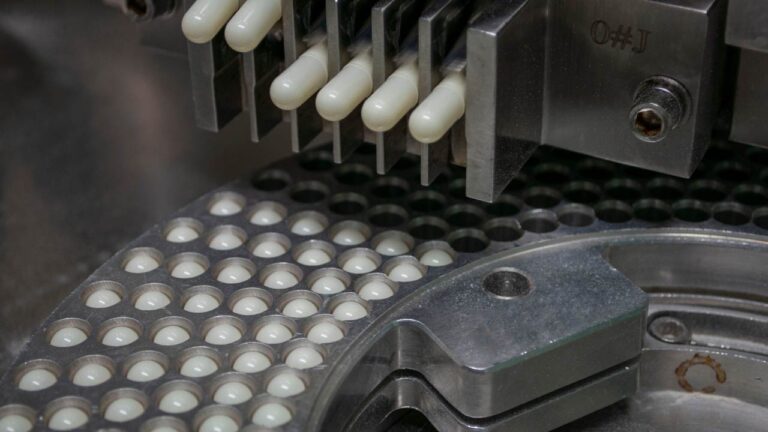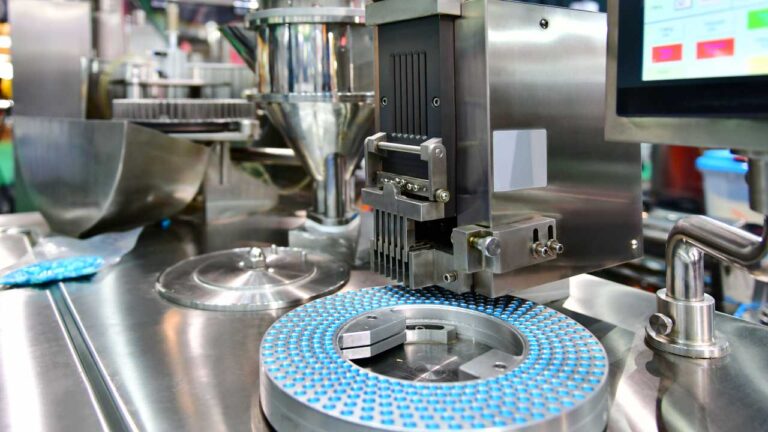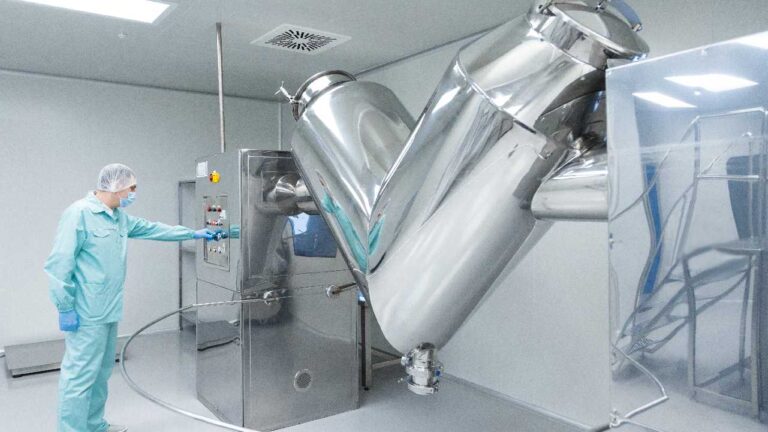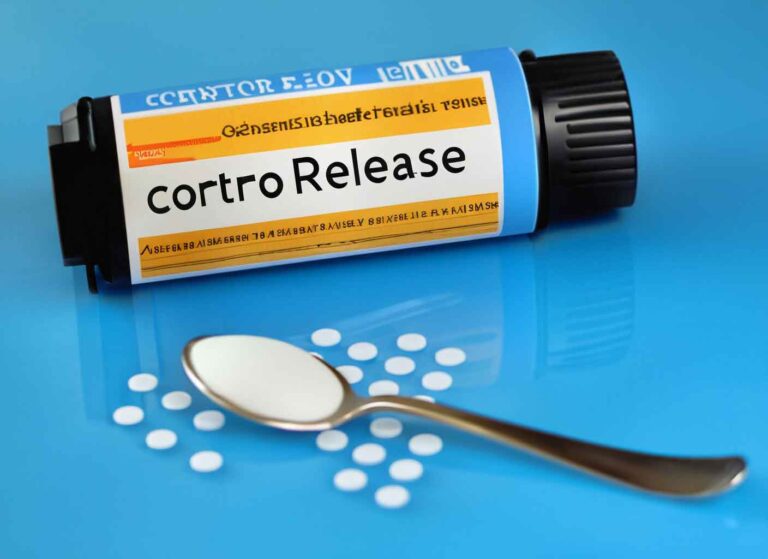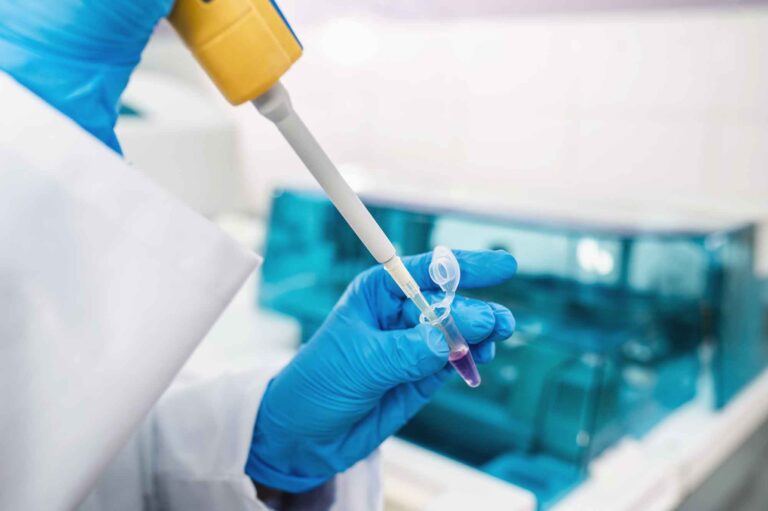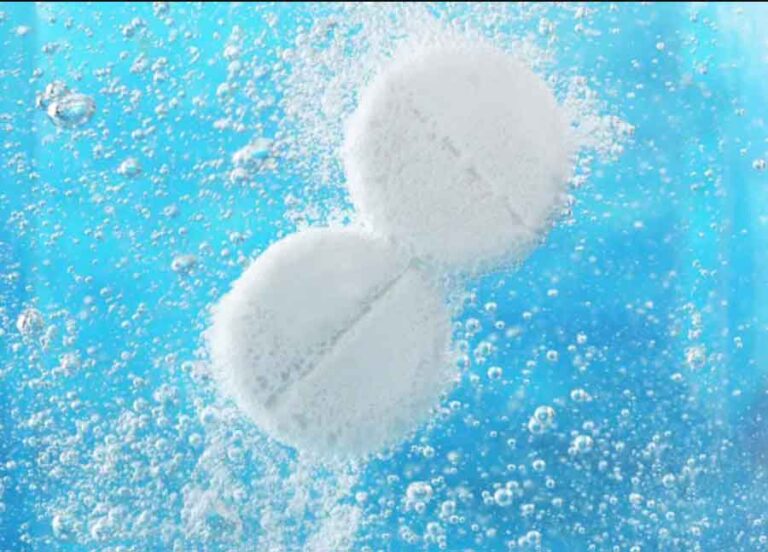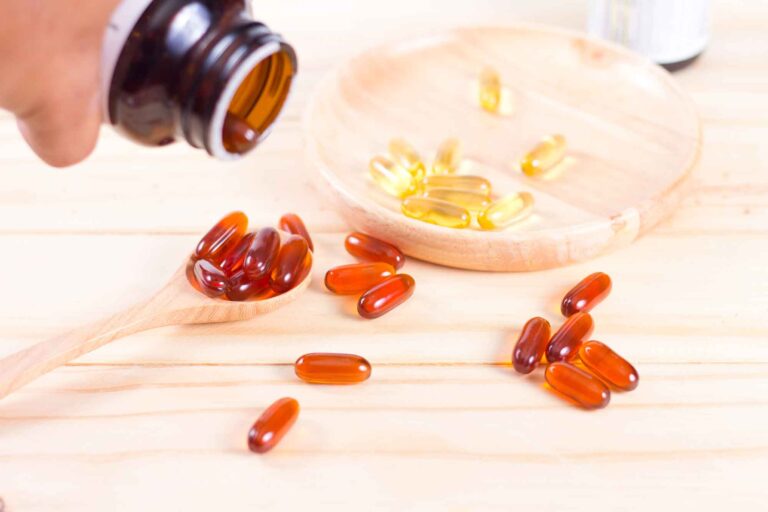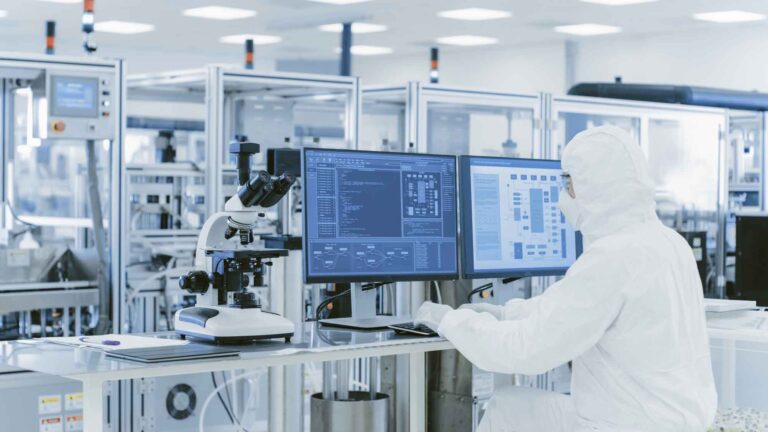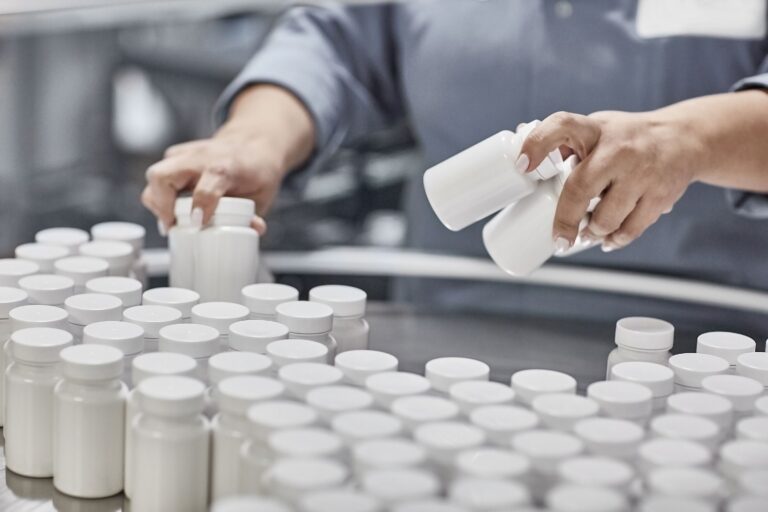Hot Melt Extrusion (HME) involves the processing of polymeric materials above their glass transition temperature (Tg) to achieve molecular-level mixing of thermoplastic binders and/or polymers with active compounds. The hot melt extrusion process can be tailored to produce various dosage forms, including tablets, capsules, granules, and films. By adjusting the extrusion parameters, such as temperature, screw speed, and feed rate, manufacturers can control the physical properties of the final product, such as particle size, shape, and density. Furthermore, HME is employed in the development of transdermal patches, where the extruded film serves as a drug reservoir that can be applied to the skin for controlled drug delivery. This application is particularly beneficial for drugs that require sustained release over an extended period.

Hot-Melt Extrusion for BCS Class 2 & BCS Class 4 Drugs
Solubility & Permeability Challenges
BCS Class 2 drugs are characterized by low solubility and high permeability. Enhancing their solubility is crucial for improving bioavailability. BCS Class 4 drugs present both low solubility and low permeability, making them the most challenging in terms of formulation. Here are some advanced strategies using HME:
- Amorphous Solid Dispersions (ASD): HME disperses drugs into a polymer matrix, forming ASDs. This process enhances solubility by maintaining the drug in an amorphous state, preventing recrystallization.
- Particle Size Reduction: The mechanical action of the screws in the extruder can reduce the particle size of the drug, increasing its surface area and dissolution rate.
- Use of Solubilizing Agents: Incorporating solubilizing agents like surfactants and co-solvents during the HME process can significantly improve the solubility of BCS Class 2 drugs.
- Permeability Enhancers: Incorporating permeability enhancers such as surfactants and fatty acids during the HME process can improve the drug’s ability to cross biological membranes.
- Prodrugs: While HME is not typically used to create prodrugs directly, it can be employed to enhance the solubility and bioavailability of prodrugs by forming amorphous solid dispersions.
- Lipid-Based Formulations: HME is an effective method for creating lipid-based formulations. It can be used to process lipid excipients and drugs into solid dispersions, improving solubility and absorption.
- Nanotechnology: HME can be combined with nanotechnology to produce nanosized drug particles and nanoemulsions. This combination can significantly improve the solubility and permeability of poorly soluble drugs.
- Bioadhesive Drug Delivery Systems: HME Can Be Used To Create Bioadhesive Drug Delivery Systems, Such As Buccal Tablets, Which Enhance The Residence Time And Permeability Of Drugs At The Absorption Site.
Cost-Effectiveness Of Hot-Melt Extrusion (HME)
Material Savings
- Hot-Melt Extrusion (HME) technology is renowned for its ability to utilize less expensive, non-solvent based excipients, which directly contribute to significantly lower raw material costs.
- This innovative approach facilitates the use of more affordable, readily available materials without the added expense of solvents, which are typically required in traditional pharmaceutical manufacturing processes.
- Hycon, with its extensive expertise in formulation, is adept at selecting these cost-effective materials, ensuring that the quality of the final product is not compromised.
- By meticulously choosing suitable excipients, Hycon ensures both the efficacy and safety of pharmaceuticals while maintaining budget-friendly production costs.
Operational Cost Reduction
- One of the standout benefits of HME is its solvent-free nature, which not only eliminates the need for costly solvent recovery systems but also reduces the risk of solvent contamination.
- The absence of solvents means that manufacturers do not need to invest in expensive equipment to recover and recycle these solvents, leading to substantial operational savings.
- Additionally, this reduction in solvent use minimizes the potential for contamination, ensuring a cleaner and safer manufacturing environment. Hycon has developed operational protocols that are specifically designed to maximize the cost-efficiency of the HME process.
- These protocols streamline production, minimize downtime, and optimize resource utilization, all contributing to reduced operational costs.
Minimized Waste
- Compared to traditional pharmaceutical manufacturing methods, HME processes generate significantly less waste, which is often associated with extensive cleanup and waste management.
- Traditional methods typically require large quantities of solvents and other materials that result in considerable waste byproducts, necessitating elaborate and costly disposal processes.
- In contrast, HME’s efficient use of materials and its solvent-free nature mean that there is less waste to manage. Hycon goes a step further by implementing advanced waste reduction strategies in its HME operations.
- These strategies not only enhance cost savings but also contribute to the company’s commitment to sustainability and environmental responsibility by minimizing the ecological footprint of its manufacturing processes.
Throughput Advantages with HME
High Production Capacity
- HME is inherently suited to high production capacities due to its continuous processing nature, allowing for the production of large quantities of pharmaceutical products in a relatively short time frame.
- This continuous processing capability contrasts sharply with the batch processing methods used in traditional manufacturing, which are often time-consuming and less efficient.
- Hycon’s production facilities are specifically optimized for high-capacity output, incorporating advanced machinery and technologies to ensure the timely delivery of large orders.
- This optimization enables us to meet the demands of large-scale pharmaceutical production, maintaining both high volume and consistent quality.
Reduced Labor Requirements
- The automation and continuous operation characteristic of HME significantly reduce the need for manual intervention and labor, which can be a substantial cost factor in manufacturing.
- Automated systems can operate with minimal human oversight, leading to lower labor costs and fewer opportunities for human error.
- Hycon has invested heavily in advanced automation technologies, ensuring that its manufacturing processes maintain high throughput while requiring only optimal staffing levels.
- This investment not only lowers labor costs but also enhances the precision and consistency of the manufacturing process, leading to higher-quality products.
Streamlined Manufacturing Flow
- The integration of HME with other manufacturing processes results in a streamlined flow that minimizes transition times between stages.
- Traditional manufacturing processes often involve multiple discrete steps with significant transition times, leading to inefficiencies and longer production cycles. In contrast, the continuous nature of HME allows for smoother transitions between stages, reducing downtime and increasing overall efficiency.
- Hycon’s process engineers are skilled in designing manufacturing workflows that minimize bottlenecks, ensuring a seamless and efficient production process.
- This streamlined approach enhances productivity and reduces lead times, allowing Hycon to deliver products more rapidly and reliably.
Controlled Release Formulations in HME
Designing Matrix Systems
We design matrix systems where the drug is embedded in a polymer matrix, allowing for controlled diffusion of the drug. The matrix composition and the drug’s physicochemical properties dictate the release kinetics. Factors such as polymer type, drug loading, and matrix porosity are considered to achieve the desired release profile. Additionally, the following aspects are crucial:
- Polymer Selection: The choice of polymer affects the drug release rate. Hydrophilic polymers like HPMC can swell and form a gel layer, controlling the drug release, while hydrophobic polymers like ethyl cellulose provide a more sustained release.
- Drug-Polymer Interaction: The interaction between the drug and polymer can influence the release mechanism. Strong interactions may slow down the release, while weak interactions may lead to faster release.
- Matrix Geometry: The shape and size of the matrix can also impact the release profile. For example, cylindrical matrices may provide a more uniform release compared to spherical ones.
Tailoring Drug Release
By varying the type and ratio of polymers, we tailor the drug release profile to achieve the desired therapeutic outcome. The goal is to maintain a consistent drug concentration within the therapeutic window over an extended period. Techniques such as blending different polymers, using polymer blends, and incorporating release modifiers are employed to fine-tune the release kinetics. Additional strategies include:
- Layered Systems: Creating multi-layered matrices where each layer has different release characteristics can provide a more controlled release profile.
- Coating Techniques: Applying functional coatings to the matrix can further modulate the release rate. For example, enteric coatings can protect the drug from stomach acid and release it in the intestine.
- Use Of Plasticizers: Adding Plasticizers To The Polymer Matrix Can Enhance Flexibility And Control The Release Rate By Modifying The Polymer’s Properties.
Microencapsulation Techniques in HME
Encapsulation Efficiency
In the context of HME, achieving high encapsulation efficiency is crucial for ensuring maximum protection and precise dosing of the Active Pharmaceutical Ingredient (API). The HME process involves pumping raw materials at high temperatures and pressures, resulting in a uniform product. Techniques such as spray drying, coacervation, and solvent evaporation are adapted to the HME process to produce microcapsules with high encapsulation efficiency. Key considerations include:
- Core-Shell Ratio: The ratio of the core (API) to the shell (encapsulating material) can affect the release rate and encapsulation efficiency. In HME, this ratio is carefully controlled to ensure optimal performance.
- Solvent Selection: The choice of solvent in the encapsulation process can influence the properties of the microcapsules, such as their size and release characteristics. In HME, solvents are selected to be compatible with the extrusion process and the materials used.
- Drying Methods: The drying method used (e.g., freeze-drying, spray drying) can impact the stability and release profile of the microcapsules. In HME, the drying process is integrated into the extrusion process to ensure consistency and efficiency.
Barrier Properties in HME
The encapsulating materials used in HME are chosen for their barrier properties to protect the API from environmental factors and to control the release profile. The HME process allows for the precise control of these properties, ensuring the stability and efficacy of the final product. Key factors include:
- Permeability: The permeability of the encapsulating material to the drug and other molecules can affect the release rate. In HME, materials with low permeability are selected to provide a more sustained release.
- Mechanical Strength: The mechanical strength of the encapsulating material ensures the integrity of the microcapsules during handling and storage. HME allows for the production of microcapsules with high mechanical strength, ensuring durability and stability.
- Biocompatibility: The encapsulating materials must be biocompatible and safe for use in pharmaceutical applications. HME enables the use of a wide range of biocompatible materials, ensuring the safety and efficacy of the final product.
Enhancement Benefits
High Success Rate: Our cutting-edge technologies and methodologies are designed to optimize the solubility and bioavailability of poorly soluble drugs, unlocking new therapeutic potentials that were previously unattainable. By employing advanced formulation techniques and leveraging our deep understanding of pharmacokinetics and pharmacodynamics, we can transform drugs with poor water solubility into highly effective treatments. This not only increases the success rates of drug development but also enables the delivery of medications that can more effectively reach their intended targets within the body, thus maximizing their therapeutic effects and minimizing potential side effects.
Broad Applicability: The flexibility of HME makes it suitable for developing formulations for drugs with poor solubility, stability, or bioavailability, which are often difficult to manufacture using traditional techniques. This capability allows Hycon to tackle complex formulation challenges and deliver effective solutions for a wide variety of drug products.
Stable Amorphous Forms: One of the key advantages of HME is its ability to produce stable amorphous forms of drugs with a polymer matrix., which is a critical factor in enhancing solubility. Amorphous forms of drugs have higher free energies leading to improved dissolution rates and bioavailability compared to their crystalline counterparts. The increased surface area and improved wettability of the amorphous form also contribute to enhanced solubility. However, maintaining the stability of these amorphous forms can be challenging, as they tend to recrystallize over time, leading to reduced efficacy. Hycon’s research team is dedicated to understanding the stability mechanisms of amorphous forms, developing strategies to prevent recrystallization during storage. By ensuring the stability of amorphous forms, Hycon enhances the solubility and therapeutic effectiveness of its drug formulations.
Customized Dosage Forms: We specialize in the design and development of customized dosage forms that enhance patient convenience and compliance. Our portfolio includes orally disintegrating tablets, which dissolve quickly in the mouth without the need for water, and multi-layered films, which offer controlled release of multiple active ingredients. These innovative dosage forms are meticulously engineered to address the specific needs of different patient populations, including those with swallowing difficulties, pediatric and geriatric patients, and those requiring complex medication regimens. By tailoring the dosage form to the unique requirements of each patient group, we improve the overall treatment experience and increase adherence to prescribed therapies.
Optimal Efficacy and Uncompromising Patient Safety: Our expert teams are dedicated to optimizing the efficacy of therapeutics while simultaneously enhancing their safety profiles. We achieve this through a comprehensive approach that involves rigorous testing, thorough analysis, and continuous improvement of drug formulations. By fine-tuning the release properties of medications, we ensure that the active ingredients are delivered at the optimal rate and duration, providing maximum therapeutic benefit with minimal risk of adverse effects. Our commitment to patient safety is unwavering, and we implement stringent quality control measures at every stage of the drug development process to guarantee the highest standards of safety and efficacy.
Accelerated Time to Market: In the highly competitive pharmaceutical industry, speed to market is critical. Our streamlined processes are designed to minimize the time required to bring new drugs to market, ensuring that our clients can stay ahead of the competition. From initial formulation development to clinical trials and regulatory approval, we employ efficient project management strategies and leverage our extensive industry experience to expedite each phase of the development process. By reducing delays and optimizing workflows, we enable faster access to life-saving medications for patients in need, ultimately improving public health outcomes and driving business success for our partners.
Fundamentals of Hot Melt Extrusion (HME)
The operation of Hot Melt Extrusion typically occurs above the glass transition temperature of the polymer, ensuring that the material becomes sufficiently malleable to be shaped as desired. The process utilizes a twin-screw extruder (TSE), which is a highly customizable mixer used for continuous compounding and granulation. The TSE consists of various elements, including conveying elements, kneading elements (forward and reverse configuration), and distributive mixing elements, which facilitate the efficient mixing and granulation of materials. During the HME process, the API is mixed at a molecular level with thermoplastic binders and/or polymers while passing through high-temperature counter-rotating or co-rotating screw elements. This results in the formation of solid solutions, which significantly improve the solubility and dissolution of poorly water-soluble drugs. The TSE operates by feeding raw materials into the extruder barrel, where they are subjected to intense heat and mechanical shear forces. The combination of heat and shear causes the polymer to melt and mix with the API, forming a homogenous mixture. The extruder’s screw configuration can be adjusted to optimize the mixing and granulation process, ensuring uniform distribution of the API within the polymer matrix.
Hot Melt Extrusion Process Optimization & Material Selection
Customized HME Process
Our team is adept at tailoring the HME process to align with the specific requirements of each API they encounter. This customization involves intricate adjustments to the modular twin co-rotating screws, optimizing them for superior mixing and melting of the materials involved. By fine-tuning these parameters, the team can achieve optimal dispersion of APIs within the polymer matrix, ensuring uniformity and stability of the final product. This level of customization is essential for addressing the unique challenges presented by different APIs, making the HME process highly versatile and effective for a wide range of pharmaceutical applications.
Polymer Selection
We select polymers that are compatible with the API and can maintain the amorphous state, preventing recrystallization. Polymers also act as carriers that improve the wettability and dispersibility of the drug. Commonly used polymers include:
Polyvinylpyrrolidone (PVP): Known for its excellent solubility and ability to form solid dispersions.
Hydroxypropyl methylcellulose (HPMC): Provides good film-forming properties and stability.
Polyethylene glycol (PEG): Enhances solubility and acts as a plasticizer.
Polyvinyl alcohol (PVA): Offers good mechanical properties and stability.
Advanced Material Science
Researchers at Hycon are deeply engaged in exploring the material science aspects of HME, delving into the complex interactions between various excipients and active ingredients under diverse processing conditions. This comprehensive study encompasses understanding the thermal and mechanical behaviors of different materials, how they interact during the extrusion process, and their impact on the final product’s properties. By gaining a thorough understanding of these material behaviors, Hycon scientists can make informed decisions about the selection and combination of excipients, ultimately leading to the development of more effective and reliable pharmaceutical formulations.
HME Process Parameter Optimization
Key considerations include:
- Temperature: Ensuring the polymer and API are adequately melted without degradation. The melting temperature should be carefully controlled to avoid thermal degradation of the API and polymer.
- Screw Speed: Balancing shear forces to achieve uniform mixing. Higher screw speeds can increase shear forces, leading to better mixing but may also cause degradation if too high.
- Feed Rate: Controlling the input of materials to maintain consistent output. A consistent feed rate ensures uniformity in the extrudate and prevents fluctuations in the process.
Comprehensive Support for Hot Melt Extrusion
Comprehensive API Characterization: We offer detailed data analysis and interpretation, providing a robust package for regulatory filings and thorough understanding of your API and formulations.
Feasibility and Development Support: Customized programs leverage in-depth evaluation and preformulation data. We prepare various prototype formulations under different processing conditions, backed by accelerated stability studies for comprehensive analysis.
In-House Analytical and Regulatory Expertise: Our services include thorough characterization of APIs and formulations, ensuring adherence to stringent regulatory standards.
Analytical Testing
We conduct rigorous analytical testing to characterize the physical and chemical properties of the HME products. Techniques such as differential scanning calorimetry (DSC), X-ray powder diffraction (XRPD), and Fourier-transform infrared spectroscopy (FTIR) are used to confirm the amorphous nature of the dispersions and to assess the stability and compatibility of the components.
Stability Studies
Long-term and accelerated stability studies are performed to ensure that the HME products remain stable throughout their shelf life. Hycon’s commitment to quality ensures that the final products meet all regulatory and performance standards. Stability studies involve testing the products under various environmental conditions to assess their physical, chemical, and microbiological stability over time.
Quality by Design (QbD)
- The QbD approach is integral to Hycon’s HME process development, ensuring that quality is embedded into the product from the very beginning.
- This systematic approach involves identifying critical quality attributes (CQAs) and critical process parameters (CPPs), and establishing robust control strategies to ensure consistent product quality.
- By adopting the QbD framework, Hycon not only meets regulatory requirements but also enhances the efficiency and reliability of the HME process.
- This proactive approach to quality management reduces the risk of product defects and recalls, ultimately leading to safer and more effective pharmaceuticals for patients.
- These state-of-the-art facilities include advanced extruders, spectrometers, and analytical instruments, enabling precise control and monitoring of the HME process.
- The availability of such sophisticated equipment allows Hycon scientists to conduct thorough experiments, gather accurate data, and refine their processes to achieve optimal results.
- This investment in high-quality facilities underscores Hycon’s commitment to maintaining a leading edge in pharmaceutical technology and innovation.
Quality By Design (QbD)
Hycon’s laboratories are equipped with cutting-edge HME equipment, providing scientists with access to the latest tools and technologies for research and development.
Regulatory Expertise
- The Hycon team possesses extensive knowledge of regulatory requirements for pharmaceutical manufacturing, ensuring that all HME processes comply with stringent international standards.
- This expertise encompasses understanding and adhering to guidelines set forth by regulatory bodies such as the FDA, EMA, and other global health authorities.
- By staying abreast of the latest regulatory developments and incorporating them into their processes, Hycon ensures that their pharmaceutical products meet the highest standards of safety, efficacy, and quality.
- This commitment to regulatory compliance not only facilitates smooth product approvals but also builds trust with healthcare providers and patients.
Patient-Centric Formulations
- Hycon scientists prioritize patient needs by developing formulations that enhance patient compliance and convenience, recognizing that these factors are crucial for effective treatment outcomes.
- This patient-centric approach involves focusing on aspects such as taste masking, to improve the palatability of medications, and controlled release profiles, to ensure consistent therapeutic effects over extended periods.
- By addressing these key considerations, we aim to improve the overall patient experience, making it easier for patients to adhere to their prescribed treatment regimens and achieve better health outcomes.
- This focus on patient-centricity reflects Hycon’s dedication to improving the quality of life for patients through innovative pharmaceutical solutions.
End-to-End Product Lifecycle Management: From initial development to market success, we offer comprehensive support. Our approach integrates Lean efficiency standards to optimize all phases of your product’s lifecycle.
Related Services

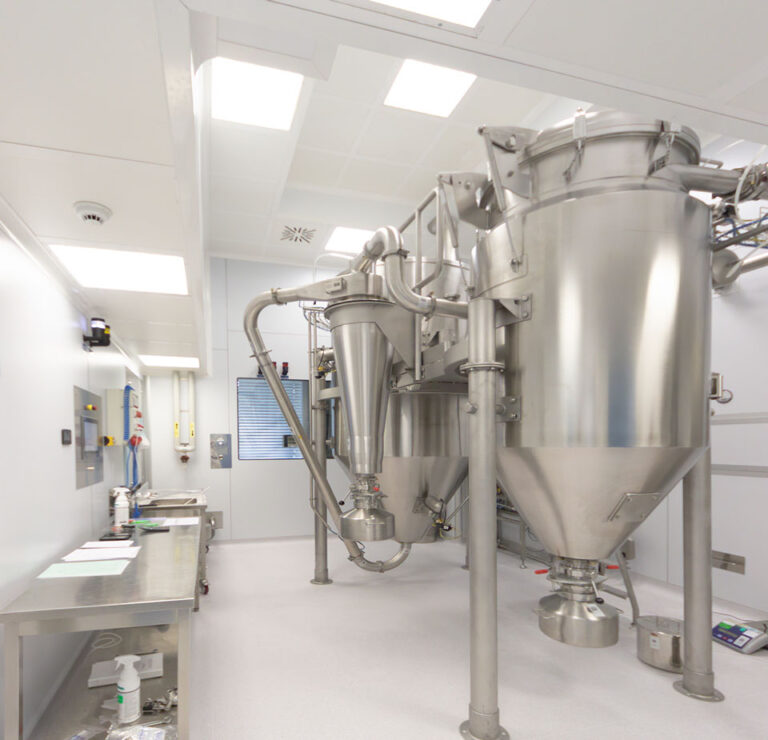
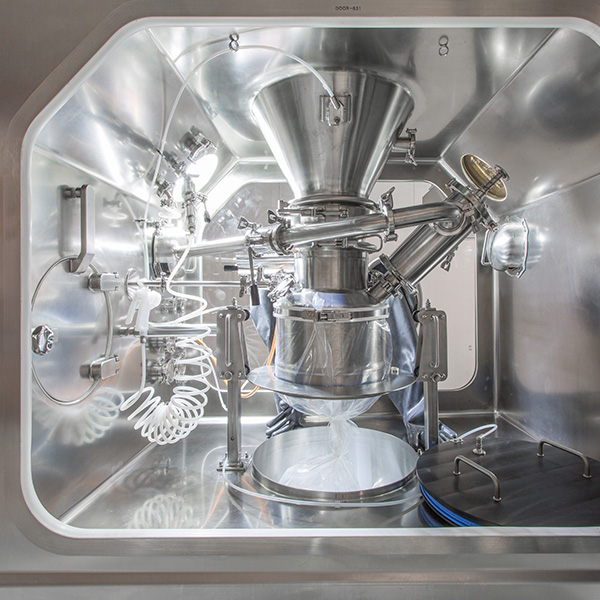
FAQs
Here are some frequently asked questions about Hot Melt Extrusion
Hot Melt Extrusion (HME) is a manufacturing process used in the pharmaceutical industry to improve the solubility and bioavailability of drugs. It involves the application of heat and pressure to mix drug substances with polymers and/or excipients until the mixture becomes molten. The molten mixture is then forced through an orifice to form a product in a specific shape, which is cooled and solidified. This continuous process is highly versatile and can be used to produce a variety of dosage forms, including tablets, capsules, films, and implants.
The main advantages of HME in drug formulation include enhanced solubility and bioavailability of poorly soluble drugs, controlled drug release profiles, and the elimination of solvents, making it an environmentally friendly option. HME also allows for the precise dosing and uniform distribution of the drug within the dosage form, improving product consistency and efficacy. Furthermore, HME can streamline manufacturing processes by reducing the number of production steps and increasing scalability.
HME can manufacture a wide range of pharmaceutical products, including solid dispersions, sustained-release tablets, transdermal patches, ocular implants, and buccal films. The versatility of the HME process allows for the development of innovative dosage forms that can meet specific therapeutic needs, enhance patient compliance, and improve drug delivery mechanisms.
HME enhances the solubility of poorly soluble drugs by dispersing them into a polymer matrix at the molecular level, forming a solid solution or dispersion. This process can convert crystalline forms of drugs into amorphous forms, which have higher solubility and dissolution rates. The use of appropriate polymers and plasticizers in the extrusion process can further improve the drug's solubility and bioavailability.
Yes, HME is particularly well-suited for the development of controlled release formulations. By selecting specific polymers and adjusting the process parameters, it is possible to engineer the matrix structure and drug distribution within the extrudate to achieve desired release profiles. This includes sustained release, delayed release, or targeted release formulations, providing flexibility in drug delivery strategies.
A CDMO offers comprehensive expertise in HME services, including formulation development, process optimization, scale-up, and manufacturing. The CDMO's team of scientists and engineers has extensive experience in selecting suitable excipients, designing formulation strategies, and optimizing extrusion parameters to achieve the desired product specifications. Additionally, a CDMO can provide analytical testing, regulatory support, and packaging services to ensure the successful development and commercialization of HME products.
A CDMO ensures quality in HME production by implementing strict quality control measures throughout the development and manufacturing processes. This includes the use of validated methods for formulation and process development, rigorous in-process controls, and comprehensive testing of the final product for uniformity, potency, and stability. Compliance with Good Manufacturing Practices (GMP) and adherence to regulatory guidelines further ensure the production of high-quality HME products.
Regulatory considerations for HME products include ensuring the safety and efficacy of the drug product, compliance with GMP regulations, and the submission of appropriate documentation to regulatory agencies. This involves detailed characterization of the drug product, including its physical and chemical properties, bioavailability studies, stability testing, and quality control measures. A CDMO can provide expertise in navigating the regulatory landscape and supporting the submission process.
Developing an HME product with a CDMO typically involves several stages, starting with a feasibility study to assess the suitability of HME for the drug formulation. This is followed by formulation development and optimization, process development, pilot-scale trials, and finally, scale-up to commercial production. Throughout the process, the CDMO collaborates closely with the client to ensure that the product meets the desired specifications and regulatory requirements.
Yes, HME can be used for the development and manufacturing of veterinary pharmaceuticals. The technology is suitable for creating dosage forms that are easy to administer to animals, such as chewable treats or long-acting implants. The ability to enhance the solubility and bioavailability of active ingredients, as well as to tailor release profiles, makes HME an attractive option for veterinary drug formulation, offering improved therapeutic outcomes and enhanced compliance.


